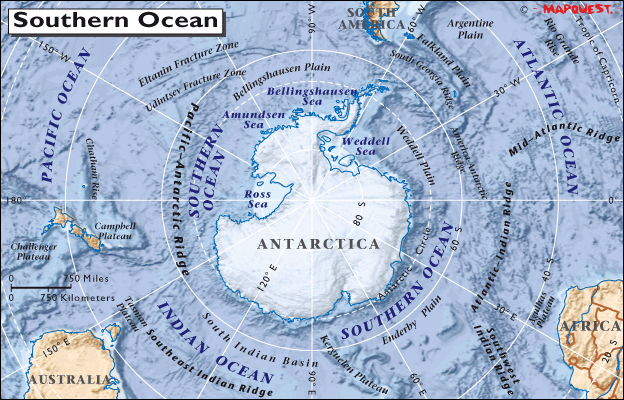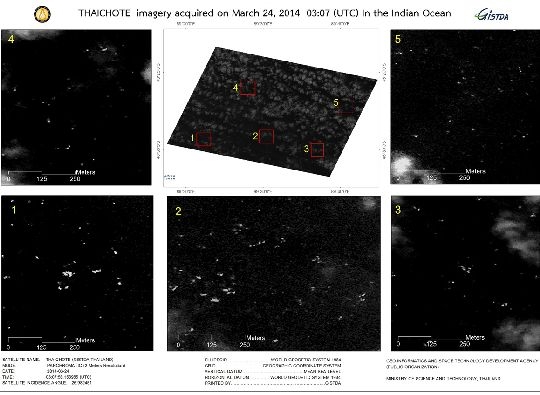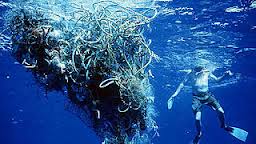April 1, 2014 – Using the ocean as a dumping ground is no April Fool’s joke. If we didn’t realize it before just by walking on a beach and seeing all that washes up on shore, then the search for missing Flight 370 is sure telling us that we are making quite a mess in our world’s oceans. See all those white objects in the satellite images below. That is human trash floating in the southern Indian Ocean, far away from the typical sea lanes where ships travel.
Seeing this type of floating garbage in satellite images just blows me away. How can we humans treat the ocean as a garbage dump when we draw much of our food from it?
And when one New Zealand-based aircraft in its search for Flight 370 spots 70 pieces of garbage in a 4 hour period you know that what we are seeing in the satellite images is just the tip of a very deep ice berg of trash.
We don’t see what is suspended in the water column below the surface either when observing the oceans from space or when flying over them in an airplane. Nor do we see the trash at a micro level, the degraded pieces of detritus that gets ingested by the life of the ocean from plankton to fish to whales to seabirds.
Everything from discarded bottles and cans to plastic bags, to fishing lines and nets, you name it, we’ve left it in the ocean. The plastic breaks up from wave action and sunlight getting smaller and smaller until it is almost microscopic in size. Does that make it safer for the environment? Emphatically no! It becomes a toxic brew that gets ingested by almost every creature in the ocean food chain. Discarded fishing lines entangle sea turtles, seals, penguins, whales, sharks and seabirds.
One research scientist who performed dissections on dead seabirds reported in one case an animal that ingested 175 pieces of plastic, probably the cause of death. One bird had even swallowed a glow stick. Apparently some fisherman use them to attract fish.
Back in 2012 a study was released based on findings of a French research vessel, the Tara, that conducted a 2-1/2 year, 112,000 kilometer (70,000 mile) voyage to study marine ecosystems. In its report it noted that the Southern Ocean, once considered the most pristine sea environment on the planet was filled with fragments of plastic to the tune of 50,000 per square kilometer, comparable to the global average. So even in as forbidding a place as the Southern Ocean which circles Antarctica, our waste had arrived, an area of the planet whose waters tend to remain isolated from water currents to the north. And that is where the current search for Flight 370 is focused. We may never find evidence of its demise, but in the search we have made all of us aware of just how extensive our degradation of the ocean environment has become.













